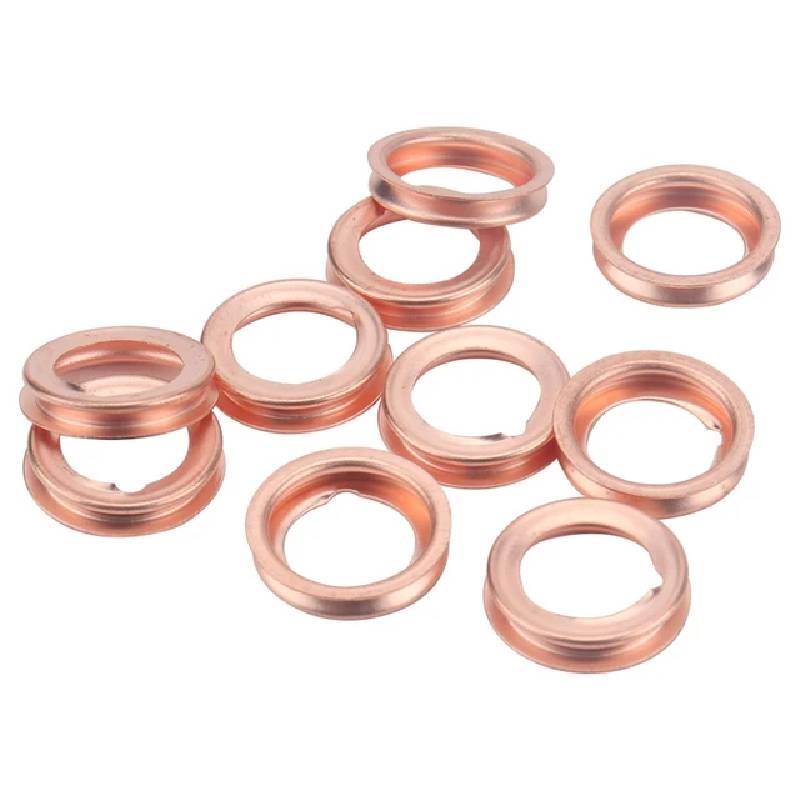lip seal dimensions
Understanding Lip Seal Dimensions A Comprehensive Guide
Lip seals, often referred to as oil seals or rotary seals, play a crucial role in various mechanical systems by preventing the escape of lubricants and the ingress of contaminants. Their dimensions are critical to their performance and suitability for different applications. This article delves into the significance of lip seal dimensions and how they impact functionality.
The Importance of Lip Seal Dimensions
The dimensions of a lip seal are integral to ensuring a proper fit within the machinery it is intended for. These dimensions typically include the inner diameter (ID), outer diameter (OD), and width (W), as well as the lip configuration. Each of these measurements plays a pivotal role in the seal’s effectiveness.
1. Inner Diameter (ID) The inner diameter is the measurement at the center of the seal that fits onto the shaft. It must match the shaft size accurately to create an effective sealing surface. If the ID is too large, the seal may not fit snugly, leading to possible leaks. Conversely, an ID that is too small can lead to installation difficulties and damage the seal.
2. Outer Diameter (OD) The outer diameter of a lip seal determines how well it fits into the housing. It is essential for ensuring the seal is held securely in place. If the OD is not correctly sized, the seal may become dislodged during operation, leading to premature wear and potential failures.
lip seal dimensions

3. Width (W) The width of the lip seal is also key to its performance. A wider seal can provide a larger sealing surface, which can improve the seal's ability to withstand pressure and accommodate shaft misalignment. However, it is essential to balance width with the available space in the machinery to avoid interference with other components.
4. Lip Configuration The design of the sealing lip itself is crucial. Variations in lip design, such as single lip, double lip, or even specialized shapes, can greatly influence the seal’s ability to retain lubricants and prevent contamination. Adjustments in lip angle, stiffness, and materials also affect the seal's performance characteristics, including its wear resistance and frictional properties.
Considerations in Selecting Lip Seal Dimensions
When selecting a lip seal for an application, it's important to consider several factors, including operating conditions, the type of lubricant used, and the potential contaminants the seal will encounter. Additionally, the dynamic and static sealing requirements must be understood since they can dictate the need for specific lip styles and materials.
Conclusion
Understanding lip seal dimensions is essential for engineers and technicians involved in machinery design and maintenance. Proper dimensioning ensures that seals perform effectively, prolonging the life of mechanical systems and reducing the risk of failure. When selecting a lip seal, careful consideration of the inner diameter, outer diameter, width, and lip configuration is vital to meet the specific needs of any application. With the right dimensions, lip seals can provide reliable protection, keeping machinery running smoothly and efficiently for years to come.
-
Understanding the Front Main Engine Seal: Purpose, Maintenance, and Installation
News Jul.29,2025
-
Understanding O-Rings and Seal Rings: Types, Applications, and Custom Solutions
News Jul.29,2025
-
Understanding Crankshaft Oil Seals: Rear Seals, Pulley Seals, and Their Role in Engine Integrity
News Jul.29,2025
-
The Importance of Front and Rear Crankshaft Seals in Engine Performance and Oil Management
News Jul.29,2025
-
Crank Oil Seals: Functions, Types, and Cost Considerations in Engine Maintenance
News Jul.29,2025
-
A Comprehensive Guide to O-Rings and Seals: Types, Materials, and Global Applications
News Jul.29,2025
-
Mastering Diesel and Performance Engine Maintenance: A Guide to Critical Oil Gaskets
News Jul.28,2025
Products categories















